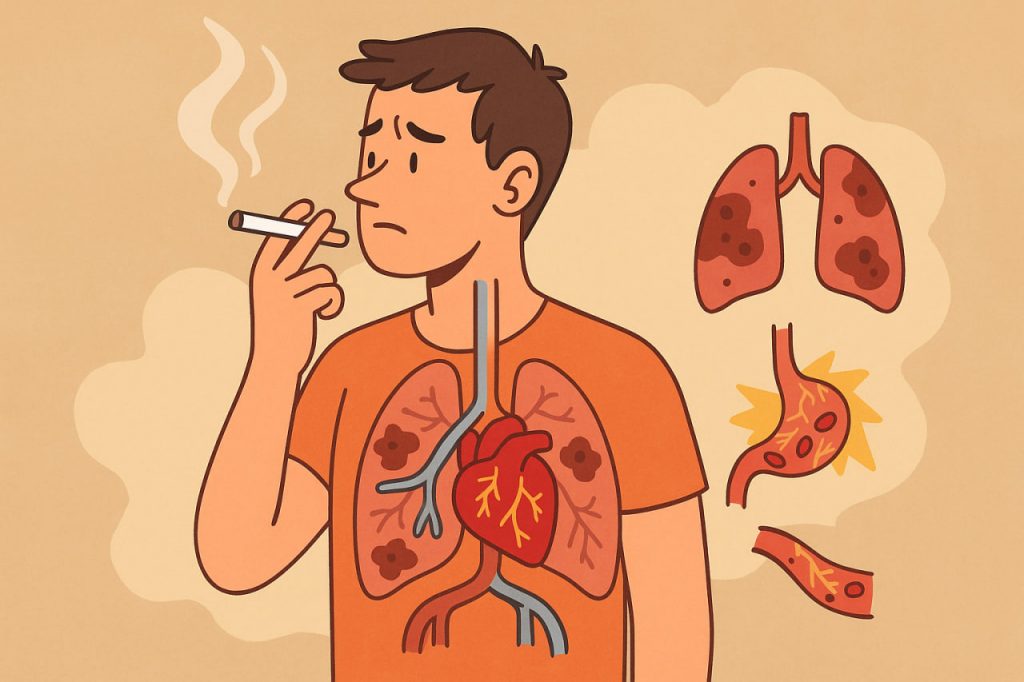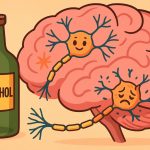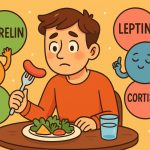Smoking is one of the most harmful habits for human health, affecting almost every organ in the body. Cigarette smoke contains more than 7,000 chemicals, many of which are toxic and at least 70 are known to cause cancer. The harmful effects of smoking are not limited to the lungs—it impacts the heart, blood vessels, skin, brain, and immune system. Understanding what happens in the body during smoking highlights why it is such a dangerous practice.
Impact on the Lungs
The lungs are the first organs to be affected. Inhaling smoke irritates the airways, leading to coughing and shortness of breath. Over time, smoking destroys the cilia—tiny hairs that clean the lungs—allowing toxins to accumulate. This greatly increases the risk of chronic bronchitis, emphysema, and lung cancer. The reduced oxygen intake also makes breathing less efficient, limiting physical endurance.
Effects on the Heart and Blood Vessels
Nicotine and carbon monoxide from cigarettes strain the cardiovascular system. Nicotine increases heart rate and blood pressure, while carbon monoxide reduces the amount of oxygen in the blood. Over time, smoking damages the walls of arteries, leading to atherosclerosis (narrowing of the arteries) and significantly raising the risk of heart attack, stroke, and peripheral vascular disease.
Changes in the Brain
Nicotine reaches the brain within seconds, stimulating the release of dopamine, which creates feelings of pleasure and relaxation. This is what makes smoking addictive. However, repeated exposure alters brain chemistry, leading to dependence. Withdrawal symptoms—such as irritability, anxiety, and difficulty concentrating—make quitting challenging.
Impact on the Immune System
Smoking weakens the immune system, making the body less able to fight infections. Smokers are more prone to respiratory illnesses such as pneumonia and influenza. Additionally, healing from wounds and injuries takes longer, as smoking reduces blood circulation and oxygen supply.
Effects on Appearance
The chemicals in cigarette smoke damage collagen and elastin, leading to premature skin aging, wrinkles, and dull complexion. Teeth and nails may turn yellow, and bad breath becomes common. Smoking also increases the risk of gum disease and tooth loss.
Long-Term Consequences
Chronic smoking is a leading cause of cancer, not only in the lungs but also in the mouth, throat, esophagus, pancreas, bladder, and more. It also contributes to infertility in both men and women, pregnancy complications, and reduced bone strength. Overall, smoking shortens life expectancy by years, even decades.
Conclusion
Smoking damages the body at multiple levels—from the lungs and heart to the skin and brain. It causes cancer, weakens immunity, and accelerates aging. Although quitting is difficult due to nicotine addiction, stopping smoking at any age greatly improves health and increases life expectancy.
Glossary
- Nicotine – an addictive substance in tobacco that stimulates the brain.
- Carbon monoxide – a toxic gas in cigarette smoke that reduces oxygen in the blood.
- Atherosclerosis – narrowing and hardening of arteries due to plaque buildup.
- Emphysema – a lung disease caused by damage to air sacs.
- Dopamine – a neurotransmitter linked to pleasure and reward.


